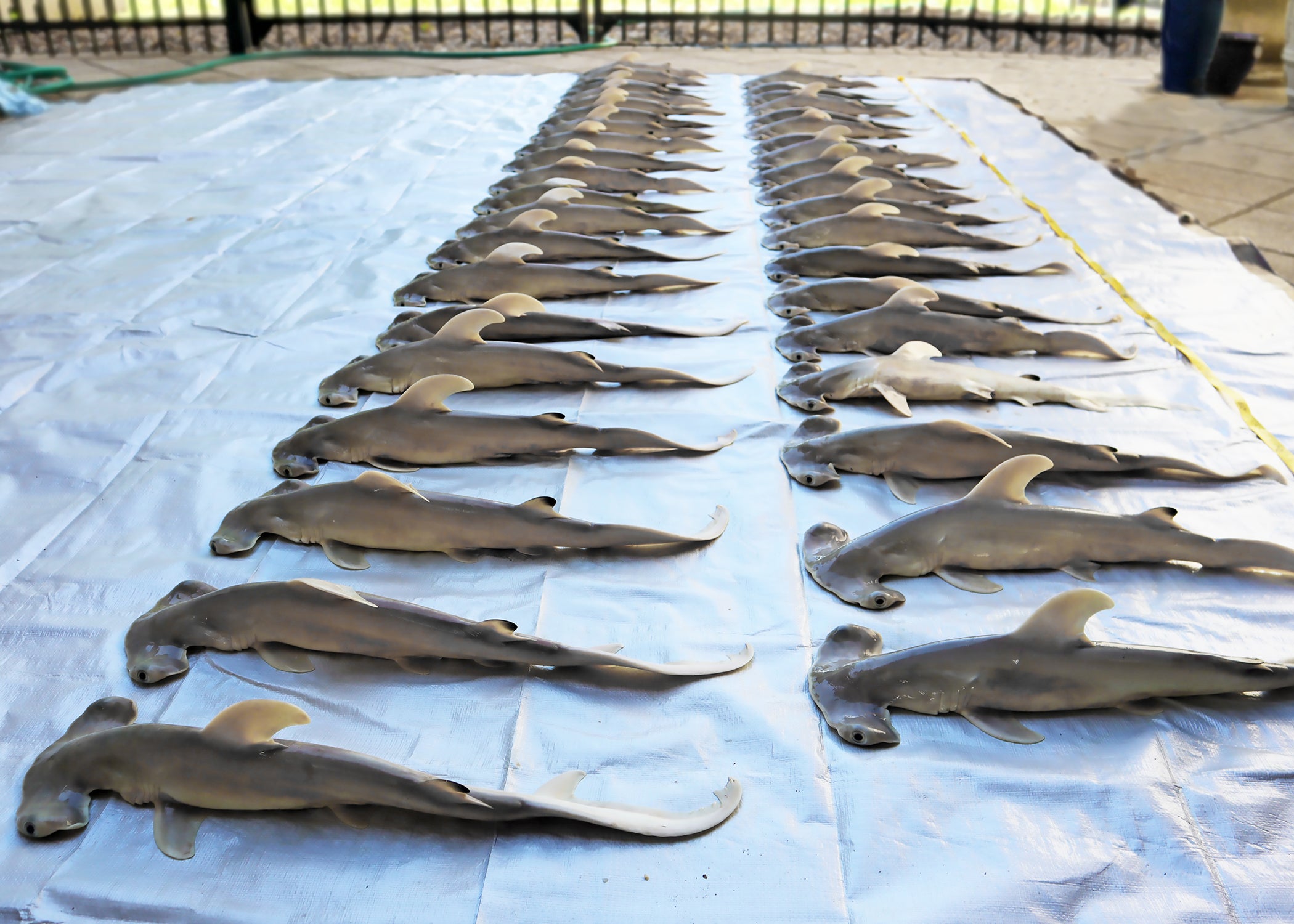Extension Outdoors: Fisheries experts examine great hammerhead shark
Published 3:33 pm Thursday, May 11, 2023
By Amanda Jargowsky
MSU Extension Service
BILOXI, Miss. — On April 21, beachgoers in Orange Beach, Ala., were enjoying a pleasant day of sun, sand and surf when they witnessed an incredible event they’ll never forget.
A deceased female great hammerhead shark, the largest of the three hammerhead species occurring in the Gulf of Mexico, suddenly washed ashore.
It is not uncommon to see great hammerheads swimming along Alabama’s coast, as they commonly patrol these shallow waters in search of their favorite prey, stingrays. However, it is exceedingly rare to find one dead on the beach at tourists’ feet — especially one that measures an impressive 14 feet long.
In fact, Marcus Drymon, a Mississippi State University assistant Extension professor who has studied sharks in the area for several decades, said it was the largest hammerhead he had ever seen washed up on a beach.
When the City of Orange Beach Coastal Resources team reached out to Drymon about the shark, he immediately assembled a team from the Marine Fisheries Ecology Program to travel from Biloxi to Orange Beach to perform a necropsy on the animal and gather valuable data and biological samples.
Examination of the heart, liver, esophagus, stomach, scroll valve (a specialized portion of the intestine), spleen, liver and pancreas revealed no signs of trauma, nor any lesions or parasites. This made it impossible to determine the cause of death with certainty. However, the scientists were shocked to find that the shark was pregnant with 40 pups, all of which were also deceased at the time the adult washed ashore.
Due to aspects of their blood chemistry, great hammerheads are especially prone to the physiological effects of capture stress, and pregnancy compounds this sensitivity. Therefore, the scientists suspect that the shark may have died because of fishing mortality, or death resulting from fishing activity.
The marine fisheries team extracted a variety of samples to bring back to the lab at the MSU Coastal Research and Extension Center for further analysis. These included vertebrae from the adult, which can be used to determine the age of the shark and its birth location and learn about population structure and connectivity; muscle tissue from the adult, which is helpful for identifying feeding habits and the degree of heavy metal contamination; and fin clips from the adult and each pup, which can provide information about genetic population structure, the number of breeding individuals in the population and relatedness among the siblings.
Relatedness is a particularly fascinating concept, as the broods of many shark species are sired by more than one male — a phenomenon known as “multiple paternity.” The number and size of the pups also indicate brood size and the timing of birth. The pups themselves will be preserved and donated to educational facilities, further extending the impact of this extraordinary event.
Although the team is saddened by the loss of these sharks, they are grateful to the City of Orange Beach Coastal Resources staff for enabling them to study these unique specimens. The samples they collected provide an opportunity to enhance scientists’ knowledge of great hammerheads in the northern Gulf of Mexico, which is critical for their continued conservation.






